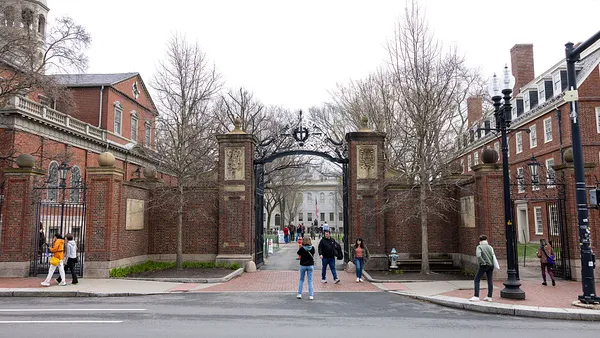Dive Brief:
- New data from the U.S. Department of Education shows private, for-profit institutions do the worst job of graduating Pell-eligible students.
- While 3 in 4 students at these institutions receive Pell grants, only 16% actually graduate with a bachelor's degree in six years, and The Hechinger Report's Jon Marcus and Sarah Butrymowicz noted in their analysis of the report that shorter-term for-profit programs (two years or less) see much greater success with getting these students a higher ed credential.
- Nonprofit institutions, by comparison, graduate between 50-55%, but they enroll significantly fewer Pell-dependent students.
Dive Insight:
These numbers should be taken with a grain of salt, since federal reporting requirements do not necessitate disclosure of graduation rates broken out by Pell grant recipients. And it should also be considered that data only tracks the graduation rates of first-time, full-time students, but many low-income students often transfer between multiple institutions and enroll part-time or take semesters off to earn money to pay for future semesters or personal situations that may arise.
Still, overall, the trend lines hold. The data should not be interpreted as an indictment on for-profit education, as much as a commentary on the needs of low-income students and the lack of access they have to higher education, even amid the biggest push in history for universal access to higher education. Association of Public and Land-grant Universities President Peter McPherson recently noted many Ivy League and top-tier institutions steer clear of low-income students to insulate their graduation and retention statistics. Not only that, he said, this population requires more resources per student to educate, and with state and federal budgets continually shrinking, admitting low-income students is a bad financial investment for schools.
Historically black and minority-serving institutions have traditionally enrolled higher numbers of Pell-eligible students and have often been characterized by low graduation rates as well, but data from the Education Trust has shown that when controlling for the same population at other schools, these institutions actually do a better job of serving low-income students of color than the rest of the sector.
There is something to be gleaned, however, from the fact that shorter for-profit programs are finding more success for low-income students: Clearer pathways to credentials tied directly to employment tracks are best for students who are likely hoping to leverage education towards social mobility. Additionally, since data has shown that even with a college degree these students are often having a difficult time moving out of poverty, shorter programs that require less money borrowed via loans should be favored. The takeaway for institutions of all types is finding ways to condense programs, through dual enrollment as well as curricular redesign, and make sure students are clearly aware of what job options exist to them after graduation. While data show many students under-utilize campus career centers, making it a mandatory part of the curriculum could help.













